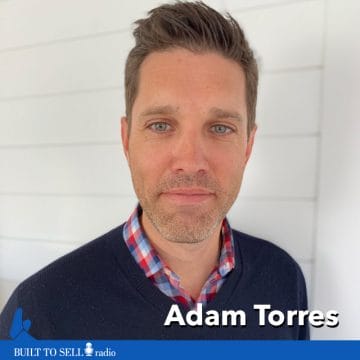About this episode
In 2001, Adam Torres started TeamDynamix, a software used by colleges and universities to keep their IT department organized.
Over the next 15 years, Torres and his partner built TeamDynamix up to more than $5 million in annual sales. That’s when Torres, who figured his company was worth 3-5 times revenue, realized selling would give him enough money to live comfortably for the rest of his life.
There are some great lessons for aspiring value builders in the episode. You’ll discover:
- The surprising thing that happens to software companies at $3 million in sales.
- What Reps & Warranties are and why they can be so scary for first-time sellers.
- What a “cap and basket” deal is and how it can limit your downside when selling your business.
- Why Torres wishes he’d never signed a five-year non-compete.
- How Nexus laws have the potential to derail your deal.
Torres used a methodology called Net Promoter Score to measure the satisfaction of his customers. It’s an approach recognized by many acquirers, and we’ll measure yours every six months for as long as you’re leveraging The Value Builder System™. Take the first step for free by getting your Value Builder Score.
Check out our article on Why Sticky Customers Matter.

About Our Guest
Adam Torres is a passionate entrepreneur and Technology Advocate.
Adam’s passions for entrepreneurial endeavors and the Internet led to the formation of TeamDynamix
in 2002. TeamDynamix is an Enterprise Service Management, Project Collaboration, Portfolio
Management, and Resource Management application targeted at Institutions of Higher Education. As
Chief Executive Officer, Adam led TeamDynamix to 7+ years of 35% growth with profit margins of seven
figures. All of this achieved without any outside funding and entirely through organic growth. From
2015 to 2017, Adam led the way in selling TeamDynamix to two private equity firms. After the
acquisition, Adam served as CEO and Chief Product Officer.
Adam currently serves on the boards of Aviso Retention, Little Dreamers Big Believers, Balanced Family
Academy, Test Double, GradLeaders, and Infoverity.


